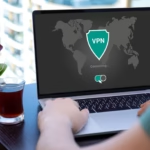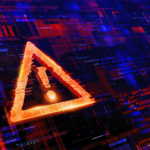Recent Blog
Check on Our Social Media
All Our Blogs
5 Most Dangerous Cyber Attacks in 2025: Essential Protection Guide
Picture this: You wake up to find your bank account emptied, your personal photos held hostage, or your identity stolen—all because of a single click on the wrong link. This nightmare scenario affects millions of people worldwide every single day through various cyber attacks.
In our hyperconnected world where we bank online, shop digitally, and store our lives in the cloud, cyber attacks have evolved from rare incidents to daily threats targeting everyone. These malicious digital assaults don’t discriminate between students and CEOs—they can strike anyone, anywhere, at any time.
Understanding different types of cyber attacks isn’t just for IT professionals anymore; it’s essential digital literacy for anyone who uses the internet. By learning how these attacks work and how to defend against them, you transform yourself from a potential victim into a cyber-smart individual who can navigate the digital world safely.
What Are Cyber Attacks?
A cyber attack is a deliberate digital assault designed to breach computer systems, networks, or devices to steal data, cause damage, or disrupt operations. Think of it as digital burglary—except criminals can operate from thousands of miles away and target millions of victims simultaneously.
Modern cyber attacks are particularly dangerous because they target personal and financial information with precision, use artificial intelligence to create more convincing deceptions, and exploit our increasing dependence on digital services. The global cost of cyber attacks exceeded $8 trillion in 2024, making cybercrime more profitable than most countries’ GDP.
1. Phishing Attacks: The Digital Con Game Everyone Falls For
Phishing represents the most common and successful type of cyber attack, accounting for over 90% of data breaches. These deceptive campaigns use fake communications that appear legitimate to trick victims into revealing sensitive information.
How Phishing Works
Cybercriminals send emails, text messages, or make phone calls that perfectly mimic trusted organizations like banks, social media platforms, or government agencies. These messages create urgency by claiming your account will be suspended or that suspicious activity has been detected.
For example, during COVID-19, hackers launched massive phishing campaigns impersonating the World Health Organization. Fake emails with subject lines like “COVID-19 Safety Measures” contained malicious attachments disguised as health guidelines. Thousands of victims downloaded these files, unknowingly installing malware that stole their personal information and banking credentials.
Protection Against Phishing
Always verify sender authenticity by checking email addresses carefully and looking for subtle spelling errors or unusual formatting. Never click links in suspicious emails—navigate to websites directly instead. Enable two-factor authentication on all accounts, and contact organizations directly using official phone numbers when receiving suspicious communications.
2. Malware and Ransomware: Digital Hostage Situations
Malware (malicious software) encompasses all software designed to harm, exploit, or gain unauthorized access to computer systems. Ransomware, a particularly devastating subset, encrypts victims’ files and demands payment for restoration.
Understanding the Threat
Malware includes viruses that corrupt data, trojans disguised as legitimate programs, spyware that secretly monitors activity, and ransomware that locks files for ransom. These threats can steal personal information, damage devices, or give hackers complete control over your system.
The WannaCry ransomware attack in 2017 demonstrates the devastating potential of these threats. It affected over 300,000 computers across 150 countries within four days, crippling hospitals in the UK and forcing the cancellation of over 19,000 medical appointments. The attack caused an estimated $4 billion in global damages.
Comprehensive Protection
Keep your operating system and antivirus software updated with the latest security patches. Avoid downloading software from untrusted sources and never open email attachments from unknown senders. Create regular automated backups using the 3-2-1 rule: maintain 3 copies of important data, on 2 different media types, with 1 copy stored offsite.
3. Denial of Service (DDoS) Attacks: Overwhelming Digital Services
DDoS attacks coordinate multiple compromised systems to flood websites or services with traffic, making them unavailable to legitimate users. These attacks can paralyze businesses, government services, and critical infrastructure.
Real-World Impact
The 2016 Dyn DNS attack targeted a major internet infrastructure provider, causing widespread outages affecting Twitter, Netflix, Reddit, and Spotify. The attack utilized over 600,000 compromised Internet of Things devices, demonstrating how everyday connected devices can become weapons in cybercriminals’ hands.
Similarly, GitHub faced a record-breaking DDoS attack in 2018 with traffic peaking at 1.35 terabits per second. While GitHub’s advanced systems restored service within 10 minutes, smaller organizations without robust defenses might suffer extended outages costing thousands of dollars per hour.
DDoS Protection Strategies
For individuals, using reputable internet service providers with DDoS protection and avoiding suspicious websites helps reduce risk. Organizations should implement redundant systems, use content delivery networks to distribute traffic load, and consider professional DDoS protection services that can filter malicious traffic before it reaches their servers.
4. Credential Theft: Stealing the Keys to Your Digital Kingdom
Credential theft involves stealing usernames, passwords, and authentication information to gain unauthorized access to accounts. This attack serves as the foundation for many other cyber crimes, as stolen credentials provide direct access to victims’ digital lives.
Common Theft Methods
Cybercriminals use keylogging software to record every keystroke on infected devices, capturing passwords and credit card numbers as users type. They also target company databases containing millions of customer credentials simultaneously, then use these stolen username-password combinations across multiple sites in automated attacks called credential stuffing.
Social engineering represents another major threat, where criminals psychologically manipulate individuals into voluntarily revealing their credentials through fake phone calls or convincing conversations.
Advanced Password Security
Create unique passwords for every account using at least 12 characters with a mix of uppercase letters, lowercase letters, numbers, and special characters. Avoid personal information, dictionary words, and common patterns that criminals can easily guess.
Password managers like Bitwarden, 1Password, or LastPass can generate and store complex passwords securely, making it easier to maintain unique credentials for every account. Enable biometric authentication when available and use hardware security keys for high-value accounts like banking or work systems.
5. AI-Powered Cyber Attacks: The New Frontier of Digital Deception
Artificial intelligence has revolutionized cyber attacks, enabling criminals to create more convincing deceptions, automate attack processes, and scale their operations dramatically. These represent the cutting edge of modern cyber threats.
AI-Enhanced Threats
AI analyzes social media profiles and communication patterns to create highly personalized phishing messages that are incredibly difficult to detect. Deepfake technology creates convincing fake videos and audio recordings of real people, enabling new forms of fraud where criminals can impersonate executives or family members with startling accuracy.
Voice cloning attacks use AI to replicate voices from social media videos or phone calls, then use these synthetic voices to deceive family members or colleagues. Business email compromise attacks now use AI to analyze executive communication patterns, creating convincing fake emails requesting fund transfers or sensitive information.
Defense Against AI Threats
Implement multi-channel verification for high-value requests, using out-of-band authentication for sensitive transactions. Establish code words or verification questions for family communications, and train employees to verify unusual requests through alternative channels.
Deploy AI-powered security tools that can identify AI-generated content, use behavioral analysis to detect unusual patterns, and maintain updated threat intelligence feeds. The key is combining AI detection capabilities with human judgment, as technology alone cannot solve the AI threat problem.
Building Your Cyber Defense Strategy
Immediate Protection Steps
Start by enabling two-factor authentication on all important accounts, especially banking, email, and social media. Install reputable antivirus software and a password manager, then update all devices and applications to their latest versions. Review and strengthen passwords for critical accounts, replacing any that are weak, reused, or old.
Set up automatic backups for important data using both cloud storage and physical backup devices. This ensures you can recover from ransomware attacks without paying criminals.
Long-Term Security Habits
Stay informed about emerging cyber threats by following reputable cybersecurity news sources and government advisories. Regularly review your security practices and update them as new threats emerge. Participate in security awareness training if available through work or community organizations.
Maintain a healthy skepticism about digital communications, especially urgent requests for personal information or money. When in doubt, verify through alternative channels before taking action.
Family and Business Considerations
Extend your cybersecurity awareness to family members and colleagues. Share knowledge about common scams and establish family protocols for verifying unusual requests. For businesses, invest in comprehensive employee training and establish clear policies for handling sensitive information and responding to potential threats.
Conclusion: Your Cybersecurity Journey Starts Today
Cyber attacks represent one of the most significant challenges of our digital age, but knowledge and preparation provide powerful protection. Understanding these threats—from traditional phishing scams to cutting-edge AI-powered attacks—empowers you to navigate the digital world safely and confidently.
The key to cybersecurity success lies not in perfect technical knowledge, but in developing security-conscious habits, staying informed about emerging threats, and maintaining healthy skepticism about digital communications. Cybersecurity is an ongoing journey that requires continuous learning and adaptation.
Your digital safety doesn’t require becoming a cybersecurity expert—it simply requires awareness, good habits, and willingness to stay informed. Start implementing these protective measures today, beginning with two-factor authentication and strong passwords, then gradually build your cyber resilience over time.
Remember that every security measure you implement makes you a harder target for cybercriminals, who typically move on to easier victims when faced with basic security obstacles. Your investment in digital security today protects not just your current assets, but your future digital life as well.
Take action now, stay vigilant, and remember that cybersecurity is everyone’s responsibility in our interconnected world.
References:
https://www.cisa.gov
https://www.sans.org
https://www.ibm.com/topics/ransomware
https://www.geeksforgeeks.org/difference-between-dos-and-ddos-attack/https://claude.ai/chat/4052a49e-8e3a-4cbd-a764-cbb0ed1f526e
Need help developing cybersecurity policies for your organization? Contact us, we can guide you through the assessment, development, and implementation process tailored to your specific needs and industry requirements.
Location
Nashik | Mumbai | Bengaluru | Dallas
contactus@quasarcybertech.com
Call Now
+91 97306 91190
Quick Links
Our Offerings
Copyright 2025 © All Right Reserved | QLeap Education & Trainings





